Planet Earth has been intricately designed by God for every living creature to function harmoniously within delicate interconnected ecosystems. Every plant, animal, bacteria, or fungi performs important functions central to maintaining life on our planet. Plants, in particular, help us breathe and purify the air.
Plants Help Us Breathe by Providing Oxygen
Through the process of photosynthesis, plants produce oxygen (O2) needed for us to breathe and survive. Plants absorb the carbon dioxide (CO2) that we release into the atmosphere through respiration, and through complex chemical processes convert this into oxygen. Plants are indeed the lungs of our planet and this is why maintaining plant biodiversity is crucial. In addition to maintain air quality, trees help to protect the ozone layer by reducing the levels of CO2 available in the environment.
Plants Purify the Air
In addition to absorbing carbon dioxide from the atmosphere, plants have also been found to be efficient at absorbing airborne contaminants both outdoors and especially indoors. Some of the contaminants removed by plants include benzene, toluene, formaldehyde, xylene, and TCE’s:
Benzene (a commonly used solvent, also found in fuels)-inks, oils, paints, plastics, rubber, gasoline, detergents, pharmaceuticals, syes, tabacco smoke and synthetic fibres
Toulene-finger nail polish, lacquers, paint, pain thinners, glue
Formaldehyde (a disinfectant, preservative and curing agent)-particle board, pressed wood, foam insulation, paperbags, waxed papers, facial tissues, wrinkle resisters, water repellents, fire retardants, binders in floor coverings, carpet backing, natural gas, kerosene, cigarette smoke
xylene-aerosol paint concentrates, scuff removers, some adhesives
Trichloroethylene or TCE(a commercial product for industrial use)-metal degreasers, dry cleaners, printing inks, lacquers, varnishes and adhesives
An increase of these toxins in the air contribute to “sick building syndrome” which can manifest itself as allergies, headaches, fatigue through the nervous system, cancer and even death. Indeed, NASA scientists are finding them to be surprisingly useful in absorbing potentially harmful gases and cleaning the air inside modern buildings.1 The plant’s leaves, roots, and the soil each actively contribute to the removal of potentially toxic substances from the air. The plants absorption of toxic chemicals from the air in turn makes such plants unsuitable for consumption; however indoor plants are rarely, if ever used for food in any event.
The use of plants to clean and purify the air is important in both work and home indoor environments. Many children now suffer from asthma and researchers have identified air pollution as a direct causative and aggravating factor for this condition. The contaminants released through cigarette smoke, for example, can be absorbed by indoor house plants if people choose to smoke in their homes. An abundance of plants in the home can in turn reduce the harmful exposure to children and or pets.
The amounts and types of individual pollutants removed by plants differ from species to species, and the levels of specific pollutants often vary significantly from home to home. Because of this, it may be best to maintain a variety of plants in the home.2
Here is a list of the top 10 best air purifying plants extracted from the book Naturally Clean:
 1. Boston fern (Nephrolepis exaltata Bostoniensis). This is the number one plant in overall purifying performance.
1. Boston fern (Nephrolepis exaltata Bostoniensis). This is the number one plant in overall purifying performance.
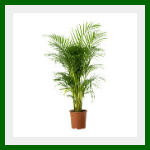 2. Areca palm (Chyrsalidocarpus lutescens). Another top overall performer.
2. Areca palm (Chyrsalidocarpus lutescens). Another top overall performer.
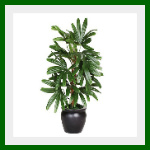 3. Lady palm (Rhapis excelsa). Removes ammonia and formaldehyde.
3. Lady palm (Rhapis excelsa). Removes ammonia and formaldehyde.
 4. Bamboo palm (Chamaedorea seifrizii). One of the top rated plants for removing formaldehyde, benzene and trichloroethylene. Also noted for high transpiration rates.
4. Bamboo palm (Chamaedorea seifrizii). One of the top rated plants for removing formaldehyde, benzene and trichloroethylene. Also noted for high transpiration rates.
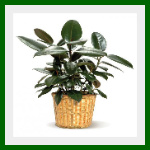 5. Rubber plant (Ficus robusta). Excels at removing formaldehyde.
5. Rubber plant (Ficus robusta). Excels at removing formaldehyde.
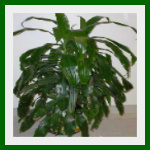 6. Dracaena Janet Craig (Dracaena deremensis). Excels at removing formaldehyde.
6. Dracaena Janet Craig (Dracaena deremensis). Excels at removing formaldehyde.
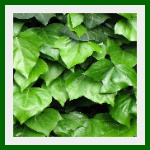 7. English Ivy (Hedera helix). Excels at removing formaldehyde.
7. English Ivy (Hedera helix). Excels at removing formaldehyde.
 8. Dwarf date palm (Phoenix roebelenii). Especially recommended for removing xylene.
8. Dwarf date palm (Phoenix roebelenii). Especially recommended for removing xylene.
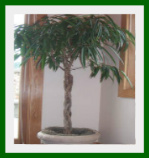 9. Ficus alii (Ficus macleilandii alii). Excellent for the removal of formaldehyde.
9. Ficus alii (Ficus macleilandii alii). Excellent for the removal of formaldehyde.
 10. Peace lily (Spathiphyllum sp.). Excellent for removing alcohols, acetone, formaldehyde, benzene, and trichloroethylene.
10. Peace lily (Spathiphyllum sp.). Excellent for removing alcohols, acetone, formaldehyde, benzene, and trichloroethylene.
Plants not only provide aesthetic appeal, but they can help to protect us and keep us healthy by reducing our toxic exposure. In addition to planting trees in our communities and neighborhoods, people should be encouraged to use indoor plants from the list mentioned above to decorate their homes. This will promote better air quality and protect their children and other loved ones from the effects of unseen chemicals.
References:
1NASA Study: House Plants Clean the Air. http://www.zone10.com/nasa-study-house-plants-clean-air.html. 18/4/2012
Naturally Clean by Hollander et al.





